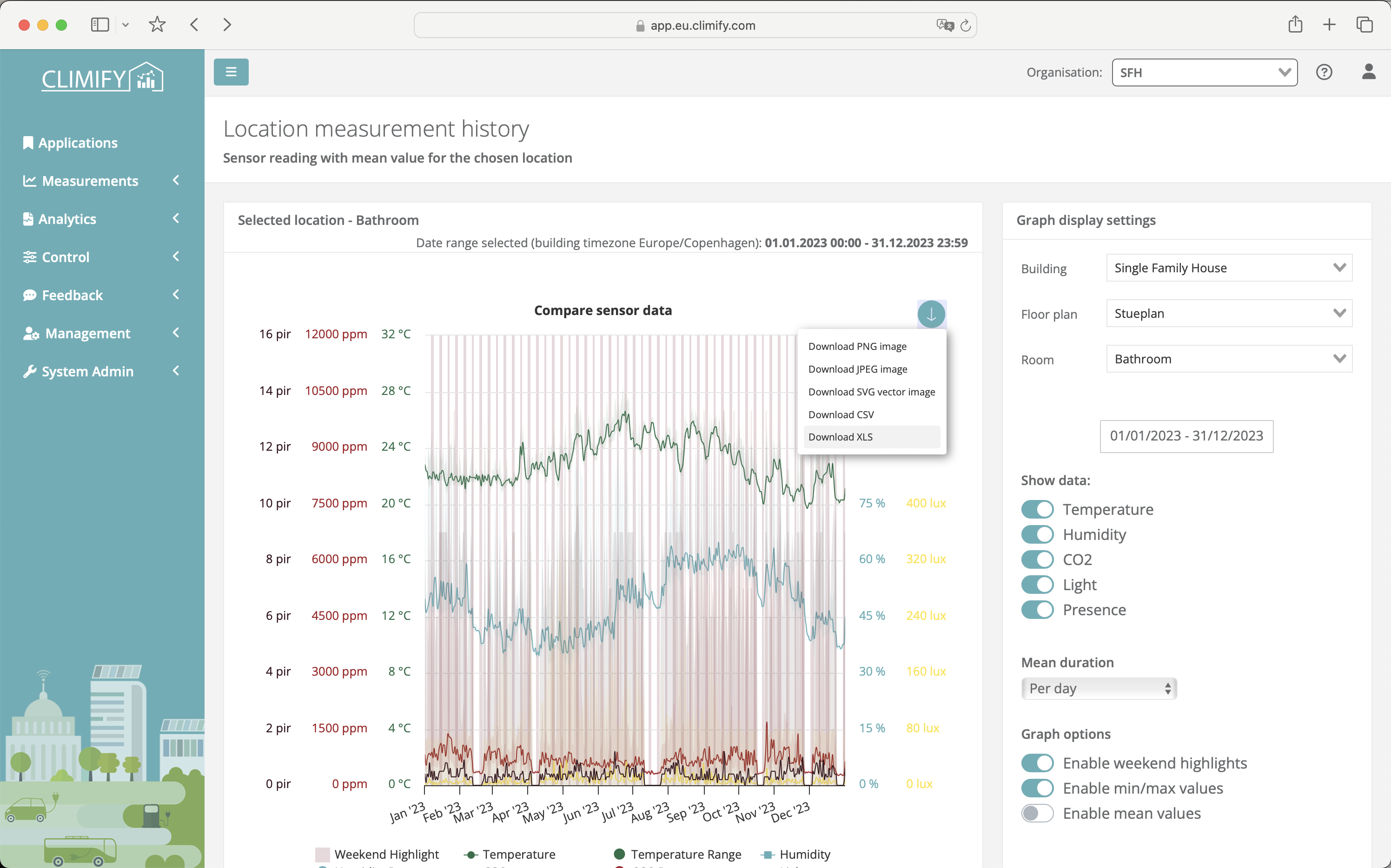Monitoring
Monitoring is designed to meet the unique needs of different environments, reflecting our commitment to creating optimal indoor conditions for every setting. Skoleklima focuses on schools, offering tools to monitor and manage air quality, temperature, and humidity, ensuring that students learn in healthy, comfortable classrooms. KontorKlima is tailored for offices and commercial spaces, enhancing workplace comfort and productivity by continuously monitoring environmental conditions and integrating seamlessly with building management systems for automated control. For larger organizations, Monitoring Pro delivers advanced analytics and comprehensive reporting across multiple buildings, enabling property managers to optimize indoor environments on a large scale. With these specialized solutions, Climify ensures that every space benefits from improved indoor environmental quality, tailored to its specific needs.









Sankt Knud Lavard Skole